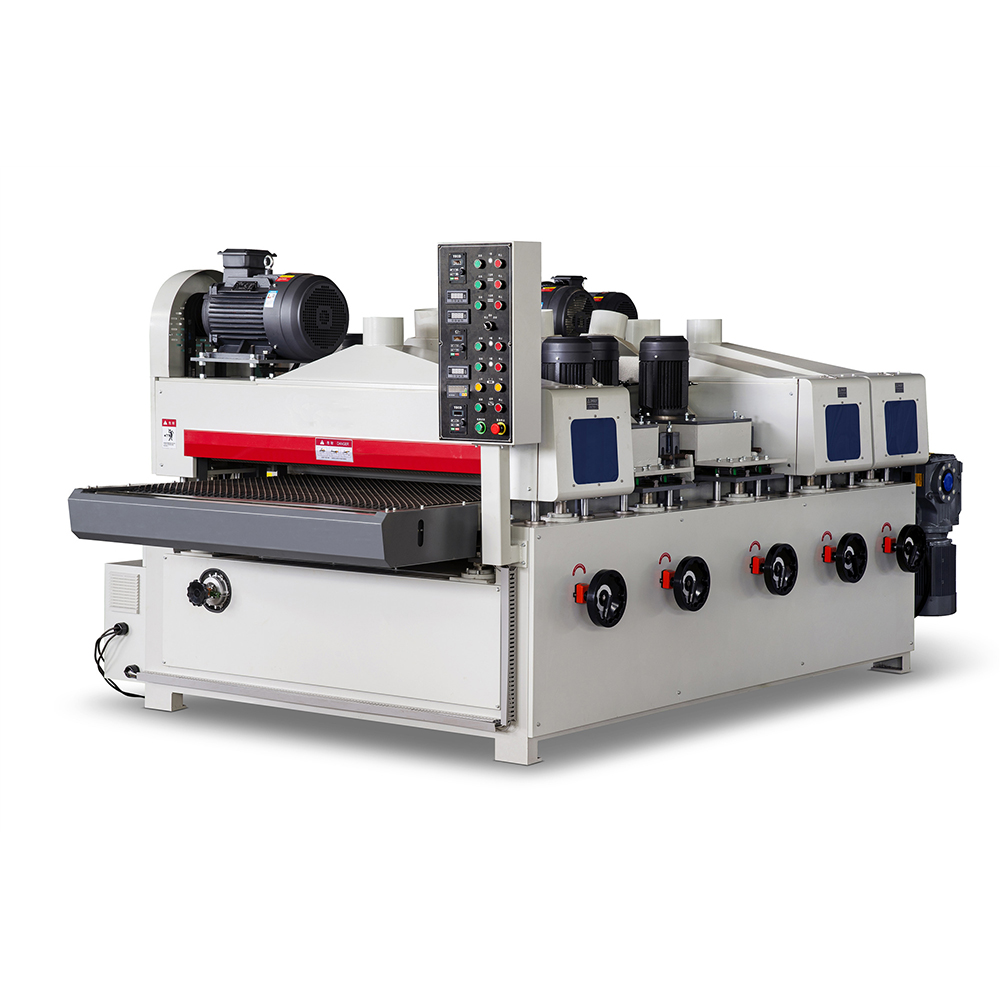Applications Of Wire Brush Sanding Machine In Furniture Manufacturing
In the highly competitive furniture manufacturing industry, standing out often requires a blend of innovative design and distinctive finishing techniques. While traditional sanders strive for a flawlessly smooth surface, the wire brush sanding machine serves a different, yet equally valuable, master: texture. This powerful tool has evolved from a simple preparation device to a primary instrument for creating some of the most sought-after aesthetic effects in modern furniture.
The Core Principle: Revealing, Not Removing
The fundamental action of a wire brush sander is differential abrasion. The machine uses rapidly rotating wire bristles that are harder than the soft, porous earlywood in a tree’s growth ring, but softer than the dense, hard latewood. As it passes over the surface, it aggressively scours away the softer wood, leaving the hard grain standing proud. This process intentionally creates a textured, three-dimensional surface that is both visually captivating and tactile.
Here are the primary applications driving its use in furniture production:
1. Creating the “Reclaimed” and “Weathered” Aesthetic
The demand for rustic, industrial, and farmhouse-style furniture is a major driver for this technology. Manufacturers use wire brushing to give new, often more affordable wood, the character and appearance of century-old reclaimed barnwood.
-
Process: A pass with a coarse wire brush over softwoods like pine, cedar, or fir quickly excavates the soft grain.
-
Furniture Applications: This technique is extensively used for:
-
Dining Tables & Tops: Creating a heavily textured tabletop that tells a story of age and resilience.
-
Cabinets and Chests: Adding a rustic charm to large surface areas.
-
Bed Frames and Headboards: Providing a focal point with rugged texture.
-
-
Benefit: It allows for high-volume production of a consistent “aged” look without the cost, scarcity, and potential instability of genuine antique wood.
2. Enhancing Grain for Visual Depth and Drama
Beyond a full rustic texture, wire brushing is used as a sophisticated finishing step to accentuate the natural beauty of wood grain, particularly in hardwoods.
-
Process: A lighter, more controlled pass with a finer-gauge wire brush is used on woods like oak, ash, or chestnut. This gently cleans and opens up the grain without creating an extreme texture.
-
Furniture Applications:
-
High-End Tables and Desks: The process makes the grain patterns “pop.” When a stain or oil is applied, it darkens the carved-out valleys, creating a striking contrast that is impossible to achieve with standard sanding.
-
Feature Doors and Panels: On cabinet fronts or wardrobe doors, this technique adds a layer of sophistication and tactile interest.
-
-
Benefit: It transforms a flat, two-dimensional surface into one with remarkable depth and character, elevating the perceived value of the furniture piece.
3. Improving Durability and Feel
The application is not purely aesthetic; it has significant functional advantages.
-
Process: The textured surface created by wire brushing is more forgiving of minor scratches and dents that are inevitable with daily use. A new scratch on a perfectly smooth, high-gloss surface is glaringly obvious, whereas on a pre-textured surface, it simply blends into the existing landscape.
-
Furniture Applications: This is ideal for contract furniture (hotels, restaurants, offices) and family furniture (kitchen tables, children’s rooms) where high durability and low maintenance are key selling points.
-
Benefit: The furniture is built to look beautiful longer, aging gracefully with use rather than appearing worn or damaged.
4. Surface Preparation and Cleaning
In a more traditional manufacturing role, the wire brush sander serves as an efficient preparation tool.
-
Process: It is used to quickly remove loose, fuzzy wood fibers (known as “raised grain”) that appear after planing or initial machining, especially on woods like oak or mahogany.
-
Furniture Applications: Used on component parts before assembly to ensure a clean substrate for staining, painting, or gluing.
-
Benefit: It creates a cleaner, more consistent base for finishes, preventing a rough “orange peel” texture after the first coat of finish is applied.
Key Technical Considerations for Manufacturers
To deploy this technology effectively, furniture manufacturers must consider:
-
Wood Species: The process is most effective on woods with distinct grain density variations. Oak, Ash, Pine, Cedar, and Chestnut are ideal. Dense, uniform woods like Maple or Birch are poor candidates.
-
Brush Type: Selecting the correct brush is critical. Steel brushes are for aggressive texturing, brass brushes for a softer effect, and nylon abrasive brushes for a very light grain enhancement.
-
Automation: For high-volume production, automated brush sanding stations can be integrated into finishing lines, ensuring every component receives a uniform texture.
-
Safety: Robust Dust Collection (PPE) is non-negotiable, as the process creates significant fine dust. Operators must wear respirators, eye protection, and gloves.

